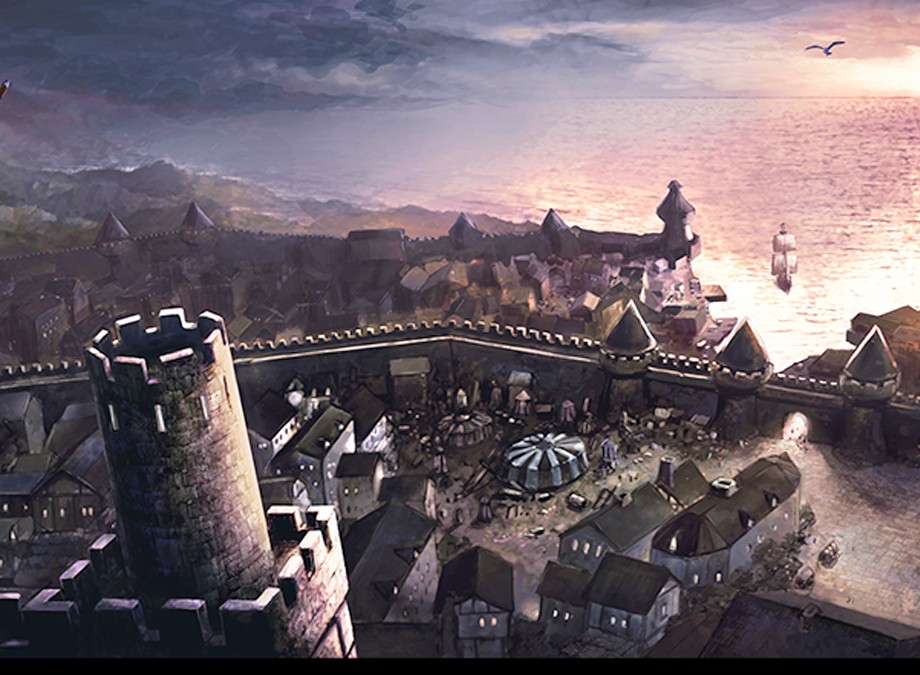You may have heard that a place is a “hellhole”, but rarely is a city so often tied to the affairs of hell as Baldur’s Gate.
Welcome back to Lore-Win, the D&D Lore Deep Dive article series. As always, I am your humble Loremaster, Sokar.
But while Baldur’s Gate has grown into the largest and most prosperous city along the Sword Coast, there are hints to a darker past in day to day life: Crimes carried out in the shadows, sinister plots lying beneath the city, taxation-fueled revolutions, guards who seem like “murderers dressed like guards” - Chris Perkins’ words, not mine.
Baldur’s Gate’s storied history speaks towards the origins of the now-prestigious city. An origin that lays not upon some gleaming ideal, but in the darker corners of Faerun. The places where criminals and naer-do-wells carry out their bloody business.
A Guide to Baldur’s Gate
Before we get into history, let’s start with a quick guide to the city as it currently stands.
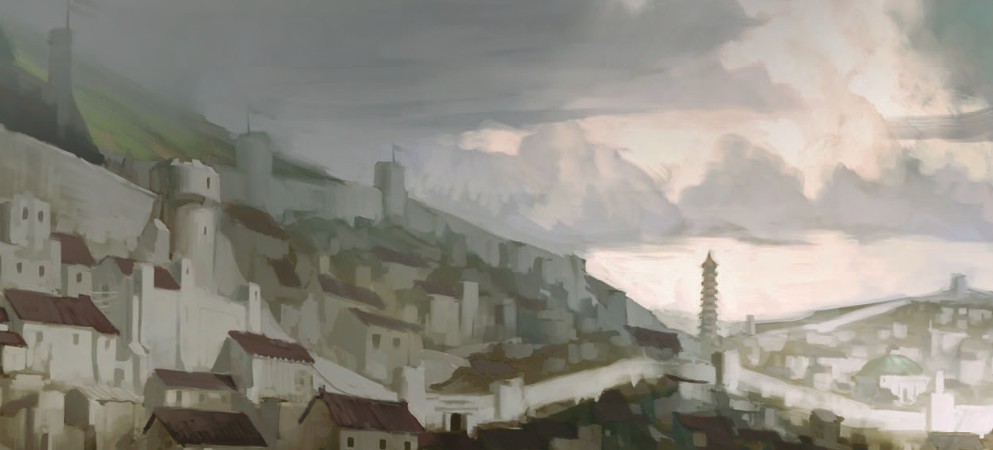
In other words, big.
Source: Murder in Baldur's Gate Campaign Guide
Baldur’s Gate is a prosperous city-state along the Sword Coast and a center of trade. It is run by a council of four Dukes, incidentally called the Council of Four, who vote on decisions within the city. One Duke is named the Grand Duke, and in the event of a tie, their vote counts twice.
Beneath the Council of Four sits the Parliament of Peers, an assembly of 50 Baldurians taken from the citizenry. Or, rather, taken from the richest of the citizenry.
On the topic of wealth, Baldur’s Gate is split into three distinct regions. The Upper City, the Lower City, and the Outer City.
The Upper City is where the crust lives: the rich, the nobility, and those that serve them. This region is guarded by the upstanding City Watch. There are few inns here and no public taverns. Those that live in the Upper City would never drink in public.
The second is the Lower City. This is a much poorer region and sees violence on a daily basis. Not helping the crime rate in the Lower City is the Flaming Fist mercenary company. Nominally, these mercenaries are supposed to act in the same manner as the City Watch, but they don’t.
Instead, the Flaming Fists are notoriously corrupt, and to source Chris Perkins once more, are more likely to demand a bribe upon discovering a murder than to actually arrest anyone. After all, bodies wind up in the harbour all the time. What’s one more?
Rogues may find interest in The Guild, a thieves guild that the Council of Four doesn’t acknowledge, but does little to stamp out.
Of course, the Lower City isn’t all doom and gloom. Trade flourishes here as well. You can find crafters, repair people, and goods that are rare across the Sword Coast. There’s also a flourishing market for rare books, thanks to the proximity of the city to Candlekeep.
Just be careful when leaving the city with one of these rare books. The Guild has thieves ready to mug those flaunting rare tomes and sell the texts back to the book peddlers.
Really, if you’re traveling around Baldur’s Gate, think about investing in a bodyguard if you can’t protect yourself. If you’re moving around, do it in a group. Otherwise, your first visit to the city may just be your last.
The third region of Baldur’s Gate lays outside the city’s walls proper. The Outer City is where those who cannot gain entry into Baldur’s Gate proper reside. Livestock and beasts of burden aren’t allowed into the city walls, so they are stabled, loaded, unloaded, or butchered here instead. Not even the Flaming Fist police the Outer City, which leaves enforcement up to those who seek to do justice, and the Guild.
Now, how did the city come to be the place it is now?
Pirate Haven
Before it was Baldur’s Gate, the settlement was known as Gray Harbor.
Up the River Chionthar from the coast proper, built along a small bay, Gray Harbor was at the time a hidden haven for pirates. These scoundrels would go to the coast at night and set up lights to lure in boats through the mists. When the boats inevitably grounded themselves on the coast, the pirates would set upon them.
Loaded with loot from their pilfering, the pirates sailed upriver back to their haven.
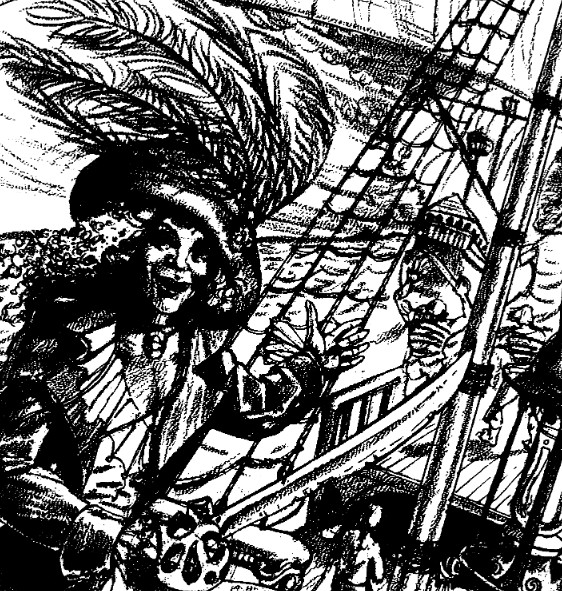
We operate on a loot-based economy.
Source: Volo's Guide to the Sword Coast
However, some of Gray Harbor’s inhabitants had grander visions of their future than petty piracy. One Gray Harbor native and a seafaring hero named Balduran, in particular, took a voyage that would shape the future of the Sword Coast.
Sailing from Faerun, Balduran sailed to the unknown land now known as Anchorome and returned to Gray Harbor with vast riches. Upon his return, Balduran invested some of his riches into the town. Namely, he had a great granite wall built around his home. As for the rest of his riches…
Well, the fate of his treasure depends on who you believe. Some sources point towards Balduran donating the rest of his riches. Other sources claim that he hid the rest in one of the many caves along the cliffs known as The Sword’s Teeth.
Regardless, all sources agree on what happened next. With the wall under construction, Balduran heard the call of adventure again. Sailing off, he set his sights for Anchorome once more, no doubt with visions of treasure in his mind.
He was never seen again.
After Balduran’s disappearance, the farmers around Gray Harbor took control over the construction of the wall. These farmers changed it to protect their own holdings instead of the harbor.
With the construction of the wall, the pirate haven quickly became a fledgling town. Nearby townsfolk and outsiders alike moved between the southern wall and the harbor, looking for somewhere safe to settle. As a result, the town flourished and grew larger.
They named the gate to the harbor Baldur’s Gate, in tribute to the old seafarer, Balduran.
The walled region became known as “Old Town” and the region between the wall and harbor “Heapside”. Soon enough, the division caused by the wall would stir conflict. The farmerlords of Old Town taxed carts coming through Baldur’s Gate. This enraged the sailors of the harbour, and they refused to pay.
The matter reached a head, and the pirates and merchants from Heapside took action. They stormed Old Town’s walls and managed to breach Baldur’s gate itself. Inside, they set themselves to siege High Hall, where the farmerlords ruled. But before they did, the four most senior pirate captains took command.
The captains argued for the lords’ surrender, and the lords accepted. A vote saw the two sides reach a truce, and a new form of government established. A form of government that remains in Baldur’s Gate to this day.
The pirate captains were installed as the new leaders, a position they jokingly called “Dukes”.
In time, the four leaders of the city would be named “the council of dukes” with one “Grand Duke” and three other Dukes. They then renamed the city Baldur’s Gate as a whole.
Oh, and the Dukes? They reinstated the taxes in good time.
Pirates, corrupt? Never.
Growing in Size
To the South of Baldur’s Gate, other events were transpiring. Namely, the establishment of the nation of Amn. Trade from Amn made Baldur’s Gate rich - not surprising given Amn’s nickname of “The Merchant’s Domain”.
By now the districts of Baldur’s Gate had taken on their new titles. Old Town became the Upper City, where the rich and nobility lived - also known as patriars in Baldurian society. Heapside meanwhile was called the Lower City, and was where everyone else lived. Though, most of “everyone else” are the poor.
As the city expanded and swallowed up Gray Harbor, the dukes decreed that the fates of all Baldurians had become entwined. As such, they ruled that the Lower City should no longer be left exposed. Two new walls were built along the bluffs of Baldur’s Gate. The walls spread all the way to the River Chionthar on both ends, enclosing the city from the ground.
Despite trade from Amn bringing prosperity to Baldur’s Gate, the city feared its southern neighbour. Amn viewed Baldur’s Gate as an upstart and a threat to their trade control in the region. As such, Baldur’s Gate feared invasion by the larger nation.
So, despite a claim to neutrality, Baldur’s Gate joined an organization known as the “Lords’ Alliance”. This alliance is a military organization made up of city-states along the coast, including well-known cities like Waterdeep, Silverymoon, Neverwinter, and Daggerford.
Despite being in this military alliance, Baldur’s Gate has only once been called to aid military assistance. In the year 1235 DR, also known as the Year of the Black Horde, Baldur’s Gate was called to aid the Lord’s Alliance in defeating an orcish horde known shockingly as... the Black Horde.
Baldur’s Gate dispatched an army led by their greatest general, the paladin Eldrith. Eldrith led her forces in a decisive battle against the horde where outnumbered five-to-one, she still destroyed their army and scattered their horde. However, the army's losses were great, and those that survived were left exhausted.
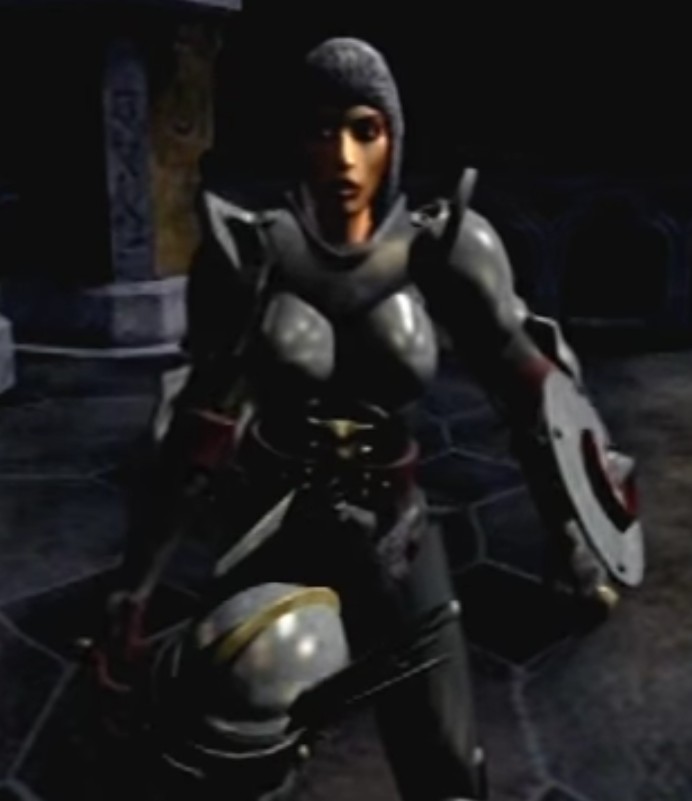
Eldrith in stunning Playstation 2 graphics
Source: Baldur's Gate: Dark Alliance
Feeling that the orcs would regroup if left alone, Eldrith petitioned the Dukes of Baldur’s Gate for aid. However, Baldur’s Gate had grown war weary and was of the opinion that the Black Horde was no longer a threat. They were tired of death. They wanted their soldiers home.
This enraged Eldrith, whose pride had led her to feel that she truly ruled Baldur’s Gate. Incensed, she pursued the horde anyways. Her forces were fanatical in their loyalty to her and were eager to do her bidding.
Of course, fanaticism and pride alone don’t win battles. And being cornered often can turn an exhausted foe into a fearsome enemy.
Eldrith had chased the remainder of the horde into a corner. This meant the orcs, without anywhere to run, fought ferociously like their lives depended on a victory. Which, to be fair, they did. Meanwhile, Eldrith’s forces were worn out and outnumbered.
It was a slaughter. Eldrith sent a messenger to desperately call for aid from Baldur’s Gate, but the Dukes refused. They had no intention of sending more Baldurians to their death. Especially since they had ordered Eldrith not to pursue.
Eldrith and her few survivors returned to Baldur’s Gate only to be turned away at the gate. The Dukes had repaid her disobedience with banishment. Neither she nor her soldiers were welcome in the city.
Eldrith was incensed. How could she be banished from her own city? She ordered her soldiers to lay siege to the city. Baldur’s Gate responded with its own forces, and swiftly crushed the tired and wounded besieging force.
For her trouble, Eldrith earned the moniker, Eldrith, the Betrayer. She was chased by forces from Baldur’s Gate and slain in a volley of crossbow bolts. A death that only enraged her further as she viewed it as cowardly.
And her anger would see her return, brought back as a Black Guard as seen in Baldur’s Gate: Dark Alliance.
At some point following this, the Flaming Fist mercenary company began operating as the armed forces of Baldur’s Gate and guards within the Lower City.
The Bhaalspawn
This would not be the last threat to darken the skies of Baldur’s Gate. And soon enough, one of the most memorable threats in the history of Faerun would arise in the city.
In 1368 DR, the Bhaalspawn Sarevok Anchev was scheming. By the way, if that name sounds familiar you might know it from my Candlekeep article. Or from the video game Baldur’s Gate.
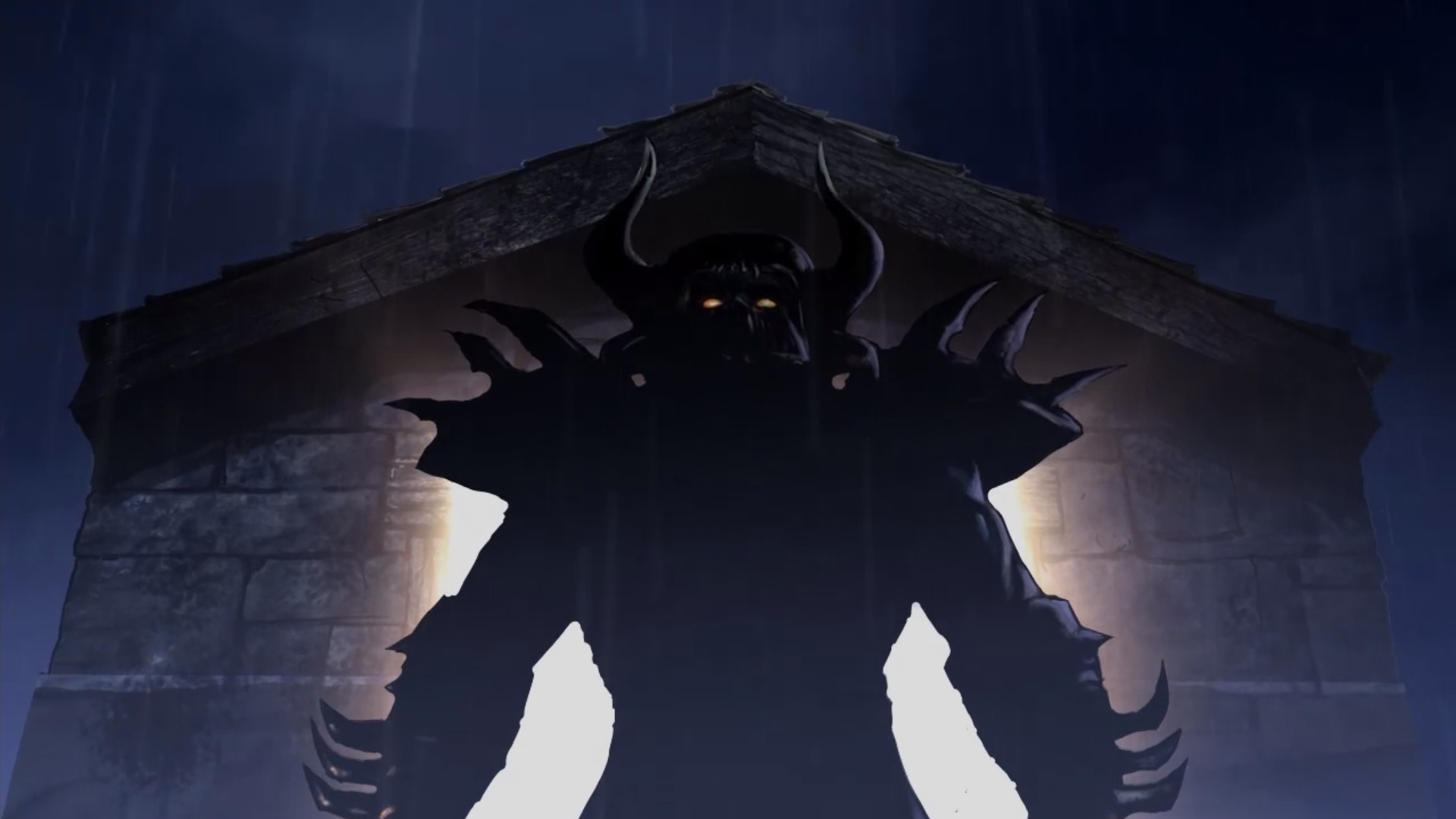
Sarevok: A face you can trust?
Source: Baldur's Gate
Using the weapon merchant organization, the Iron Throne, Sarevok sought to begin a war between Baldur’s Gate and Amn. His plan relied on poisoning the iron mines in the Amnian town of Nashkel, and hiring bandits to raid iron shipments. At the same time, Sarevok had rival trade companies infiltrated by doppelgangers who would lead them to financial ruin.
Should everything go according to plan, the Iron Throne would be left as the only source of iron in the region. This would ensure great riches for the Iron Throne. Now, that would have been enough for most, and it was certainly enough for Sarevok’s foster father. But it wasn’t close to enough for Sarevok.
Sarevok had discovered the true nature of his birth. He had been one of the many mortal children of Bhaal, born in expectation of the god of murder’s death.
Sarevok embarked on a quest to kill his siblings and claim Bhaal’s power for his own. But he knew that wasn’t enough. He had to cause far more death to be worthy of a god. Say, death on a level of an all-out war.
In order to reign over war and death, however, he needed a position of power. Using his network, Sarevok had Duke Entar Silvershield of the council of four assassinated, along with Commander Scar of the Flaming Fists. He framed both assassinations on the Shadow Thieves guild of Amn.
As a result of the rising tensions and iron shortage, Sarevok was nominated to be appointed a Duke on the Council of Four, and leader of Baldur’s Gate’s military response to Amn. It only made sense. After all, he was the leader of a mercantile guild with access to iron.
It is at this point that I need to make an aside to comment on canon.
In the many realities that make up the Forgotten Realms, sometimes there will be generalities that need to be made to ensure canon flows smoothly. Like, say, when it comes to a vast RPG with character customization and multiple endings based on your choices.
Yeah, Baldur’s Gate the game makes this part hard to talk about.
It is the opinion of this Loremaster that your Bhaalspawn is valid. If you played Baldur’s Gate, feel free to warp the history of Baldur’s Gate to your desires. But, for the purposes of recapping this tale, I need to address the default Bhaalspawn as presented by Wizards of the Coast. Even if I don’t particularly like them.
His name’s Abdel Adrian, he’s a male human Fighter, his alignment is neutral, and I think he’s boring as sin.
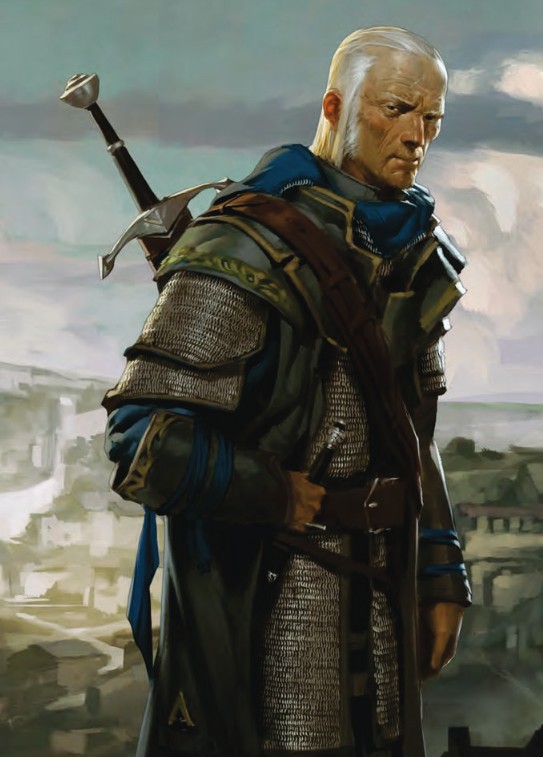
The living incarnation of "vanilla".
Source: Murder in Baldur's Gate
And because I think his canonicity should be discerned by the DM, I will refer to the player character from Baldur’s Gate as “The Bhaalspawn” except where I am unable to.
Now, back on topic.
Sarevok’s plots were only foiled due to the efforts of one of his siblings, known affectionately as The Bhaalspawn. The Bhaalspawn interrupted his coronation ceremony and revealed his plot to the nobility of the city. A brief battle ensued, after which Sarevok fled to his sanctum where he was killed by the Bhaalspawn.
The Bhaalspawn was heralded as a hero in the city, and was soon called to fight again…
That, however, is a tale for next time.
Thank you for reading, I'll be returning to cover the rest of the history of Baldur's Gate. In the meantime, if you'd like to run a campaign in Baldur's Gate, be sure to grab yourself a copy of the Sword Coast Adventurer's Guide at the Wizard's Tower.

